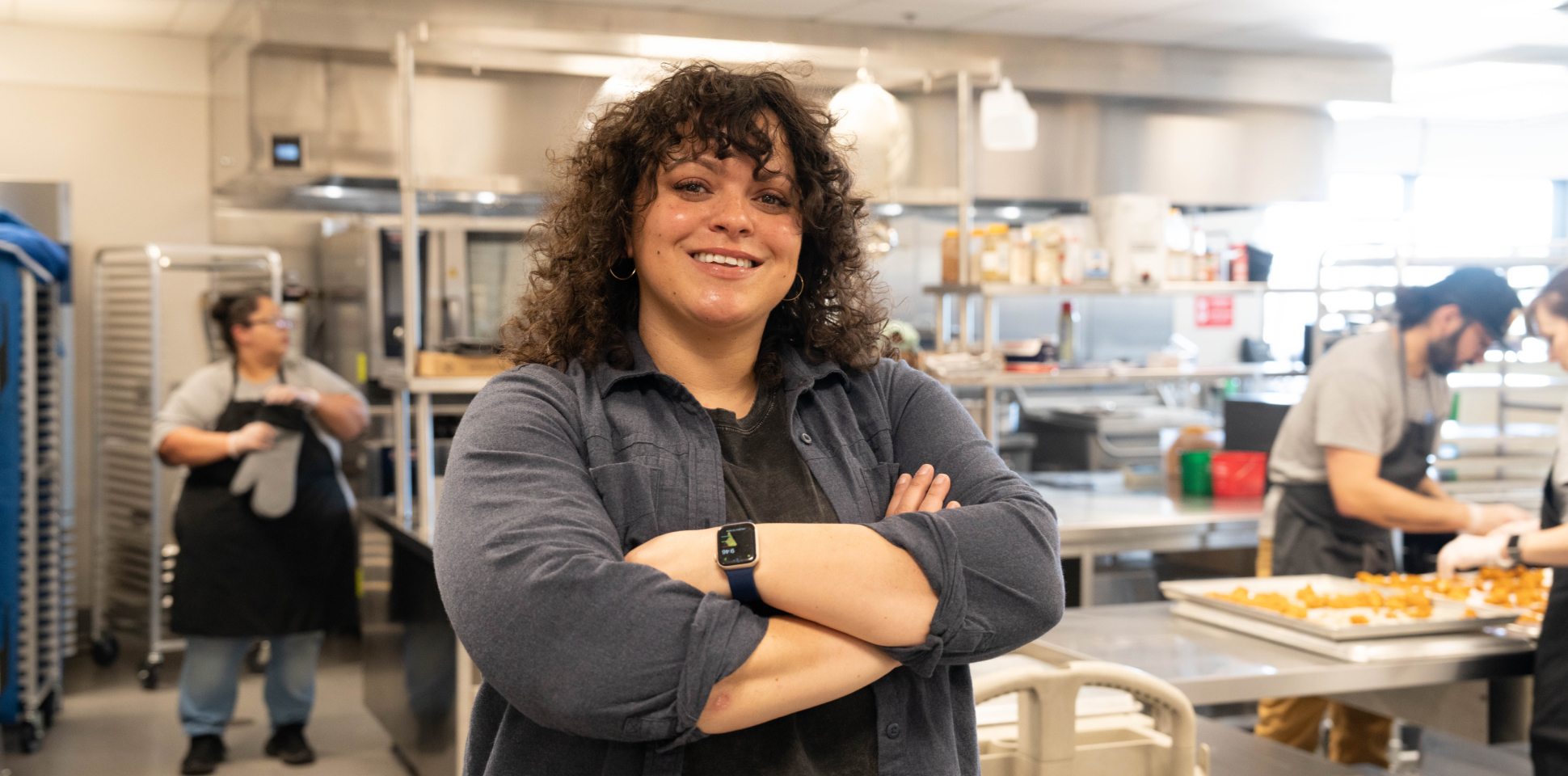How Great School Recipes Go From Ideas to the Cafeteria Tray
May 10, 2024
The switch flipped for me when I was in college, studying to become a registered dietitian. Part of our program included visiting large-scale food operations, and so I got to learn about the world of school food by going to Long Beach Unified School District and seeing the amazing work that they were doing. That’s when I knew I wanted to be a School Food Professional. I wanted to change school food by cooking great food for kids.
Since then, I’ve been able to live my dream as a School Food Professional at Western Placer Unified School District in Lincoln. My team and I are responsible for preparing, cooking and serving about 1,200 breakfasts and 4,200 lunches to students every school day.
Our goal is to prepare scratch-cooked meals that are made with high-quality, locally sourced ingredients that our students absolutely love. A lot goes into making that happen, and it can take months to bring a recipe from an idea to the cafeteria tray.
We start by surveying kids and parents, finding out what they like, what’s working and what could be better. Next, we need to source enough fresh, quality ingredients to make thousands of meals — and we prioritize working with local farms in California that can provide us with fruits, vegetables and other items.
Once we’ve got a recipe we like, we taste-test it with students to make sure they like it. Flavor is everything. Yes, it needs to be healthy. Yes, it needs to meet our various program requirements. But our job is to make food that does all that while tasting great. One of our latest student-approved, taste-tested recipes is cornbread, which we made from scratch with local flour and cornmeal. When offered this recipe at a recent school-wide event, a site administrator shared that it converted them from a lifetime of disliking cornbread into its newest fan!
After receiving student feedback, our team moves to the next step: recipe standardization. Not all of our cafeteria kitchens have the same equipment or facilities, so recipes have to be adapted to meet the needs of all our school sites. This means our chef develops recipes with various preparation methods to achieve the same results consistently throughout the district. It’s an intensive process, but the result is a win-win for everyone.
Most importantly, none of this could happen without our incredible team. They have embraced our scratch-cooking journey, challenging themselves to grow while cooking amazing meals for our kids. They work hard together, even completing supplemental trainings through organizations like the Culinary Institute of America Copia Campus, Brigaid and the Institute of Child Nutrition to develop and expand their culinary skill sets, all because they’re excited to cook better food for students. They’re also participating in other professional development opportunities like Chef Ann Foundation’s Healthy School Food Pathway Pre-Apprentice and Apprentice program.
I get really excited when I think about what is happening in school food now and the potential of school food. In addition to supporting the health of students by cooking great meals that help them thrive in and out of school, School Food Professionals are a vehicle for changing local food systems and supporting their communities. We’re supporting our community by making fresh, delicious meals that our kids really enjoy.
So many districts across California — Vacaville Unified, Madera Unified, Mount Diablo Unified, and Marysville Joint Unified, just to name a few — are making fantastic, flavorful, locally sourced meals, like fresh-made sushi or local halibut for fish tacos. Madera Unified is even roasting turkeys — not only for Thanksgiving, but also their daily sub sandwiches!
My dream for school food is for it to be truly student driven and culinary focused. That means menus that are student approved, filled with menu items that taste great that students want to eat. I want to make sure we use high-quality ingredients from local producers. I want that to be the norm for students. And it can’t happen without School Food Professionals and the skill, creativity and care they put into these menus.
I love being a School Food Professional. This is the most exciting time to be in school food. More and more districts across California are sourcing local produce, hiring chefs, developing delicious recipes, and cooking high-quality meals for their students. I can’t wait to see where school food is going to go.
